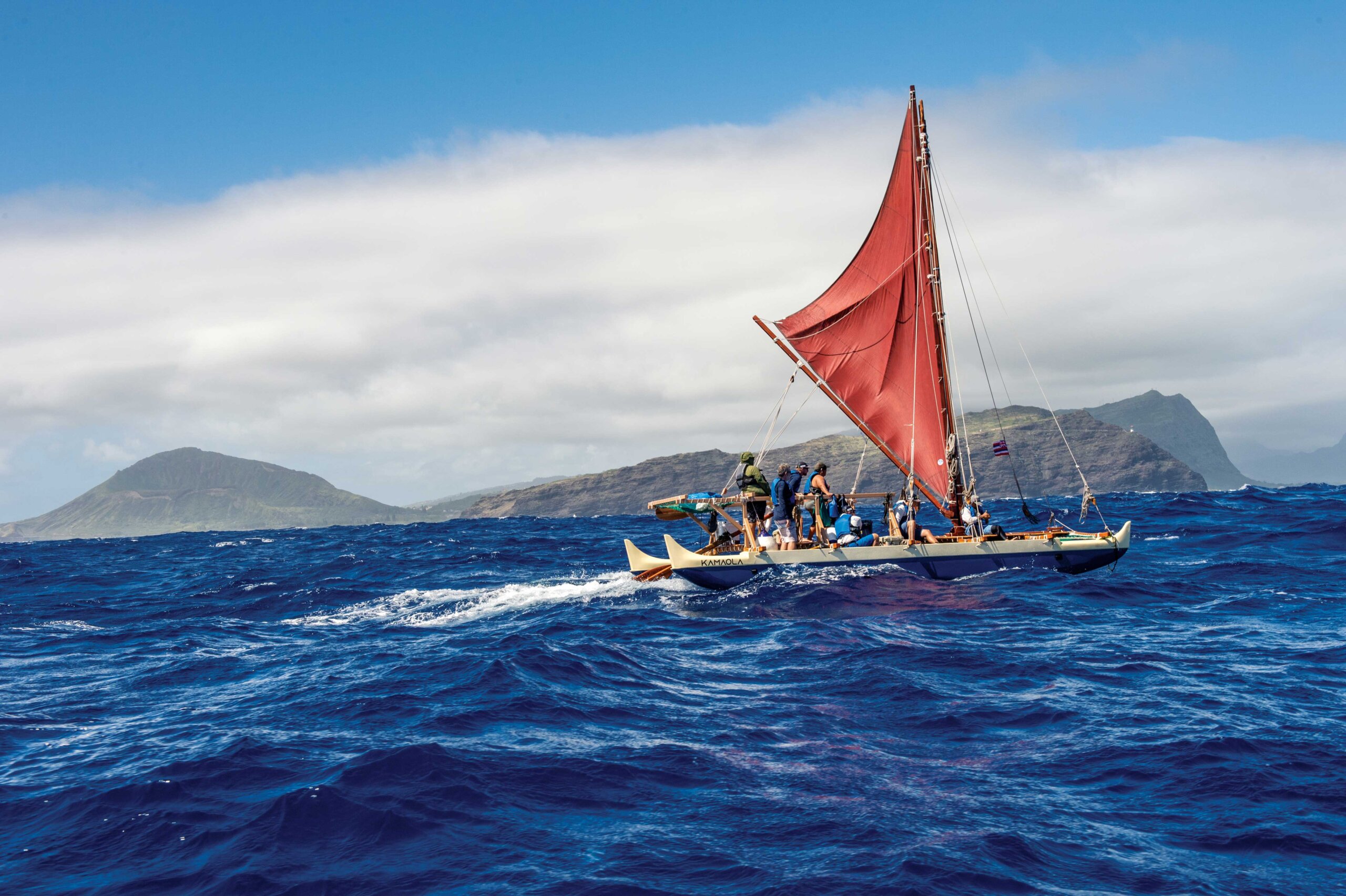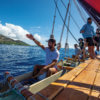By Shannon Wianecki
“It takes a village to raise a child,” says Captain Kaniela Lyman-Mersereau ’05. “It also takes a village to launch a canoe – and that’s just what the Punahou community has come together to do with Kamaola.” Since the double hulled vessel took her maiden voyage on October 22, 2022, hundreds of students, faculty and community members have set foot on the wa‘a. They’ve embarked on close to 100 sails, more than half of those crewed by students.
The milestone marks an important point in Punahou’s legacy of supporting Polynesian wayfinding; five of its alumni, including Nainoa Thompson ’72, sailed aboard Hōkūle‘a on her groundbreaking roundtrip to Tahiti in 1976. Along this continuum, Punahou has made history of its own: Kamaola is the first wa‘a kaulua to be concurrently owned and operated by a school in the state. Beyond being a graceful vessel, Kamaola is emblematic of achievement – a physical manifestation of goals and dreams, which emerged in 2017 when Dillyn Lietzke ’20 floated the idea to create a wa‘a to teach students about sustainability, navigation and Hawaiian culture.
The canoe, whose name means “Living-child,” now has a life of its own as a catalyst for individual discovery and community empowerment. “We are individuals, but we are deeply intertwined with each other and with our ‘āina,” says Lyman-Mersereau. He believes that good seamanship starts with fostering relationships on land. “I don’t care if you are the best paddler or the best sailor, or even if you know how to tie all 4,000 types of knots,” he says. “If you are not invested in being a good steward of your environment, your community, and your ‘ohana, you are not ready to go to sea. You still have some work to do on land.”
Lessons in Sailing – and in Life
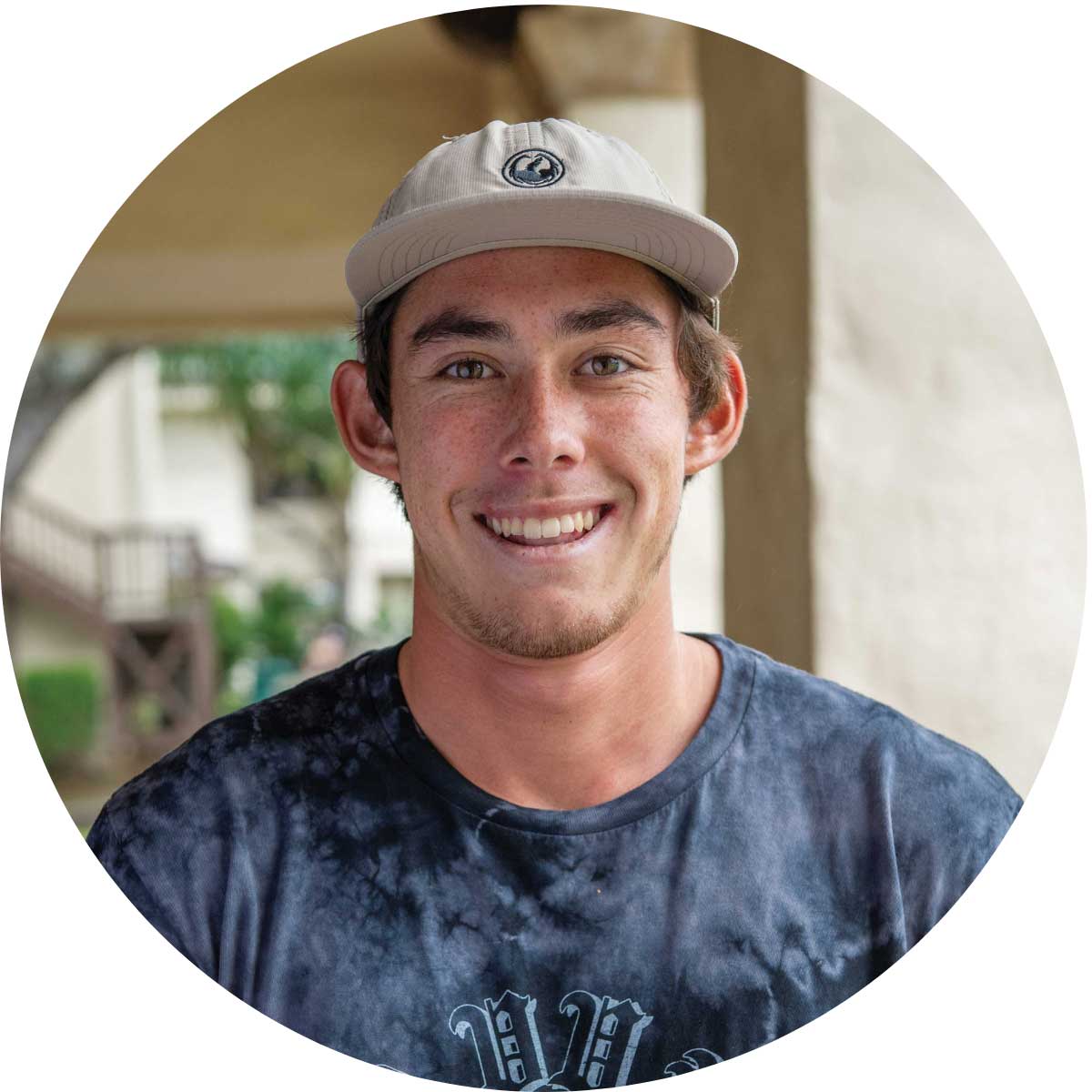
“The first time I saw Kamaola with her sail and mast and everything … it was a pretty jaw-dropping moment,” says Jack Ho ’23. “Just to see the Punahou community come together and create her and birth her was super special.” The Punahou senior felt particularly inspired by Lyman-Mersereau, who had been his PE teacher since the sixth grade. Over the years, the two forged a bond over their love of surfing and watersports. “To see Kaniela rise to the occasion, be a leader and a captain and help us make something so beautiful … I was inspired by him,” says Ho.
Ho helped build Kamaola and twice enrolled in Punahou’s new Voyaging class. When lessons first shifted from campus into the water, the surfer found the collaborative element of sailing a canoe challenging. “Surfing is a solo sport,” he says. “But as soon as you step on a canoe, you have to work together. It taught me how to work with my classmates, teachers and friends,” he says. The effort came with rewards. “It’s awesome to see Māmala Bay where I grew up from the sea, from a different perspective,” says Ho. “On the boat, everything slows down. You can listen to the ‘āina breathe.”
Students tend to go silent while sailing on Kamaola. “I call it canoe awe,” says Taryn Loveman, crew member and director of the School’s Design Technology and Engineering department which hosts the voyaging program. “They don’t know what to expect, so they just start looking at everything, listening and breathing it in.” Later they write in their journals about how the water rushes between the hulls and the ropes snap taut in the wind. “It’s hard to get kids in that observational state, but the canoe just does it,” says Loveman. “You push off from the dock and it just happens. It’s powerful.”
Students have multiple opportunities to engage with Kamaola: in the classroom, on the dock, at sea and in extracurricular clubs. Each year around 60 ninth graders enroll in the Introduction to Voyaging course for social studies credit. They study basic seamanship skills, Hawaiian culture, and the history of Pacific voyaging. Academy students in Oceanography and Activity Days can look forward to field trips on the water. Last year, the student-led Voyaging Club partnered with the Astronomy Club for stargazing on Chamberlain (Middle) Field. This year they will visit the planetarium. A new Lei Club will support and create lei for Kamaola’s protocols and events.

Seniors who elect to take the Hawaiian Voyaging capstone class can dive deep into the guiding proverb: “He wa‘a he moku, he moku, he wa‘a,” or “the canoe is an island, and the island is a canoe.” In other words, life on a wa‘a is a microcosm of life on land; people must depend on each other, care for their communities, and steward the natural environment in order to thrive. Chloe Yoshiki ’23 first became involved with Kamaola as a sophomore when she attempted to weave a traditional lauhala sail for the canoe. “We did a lot of work gathering leaves,” Yoshiki remembers. “We cleaned up the campus and practiced mālama ‘āina, land stewardship at Pu‘uomānoa. That was really valuable, because as we learned in voyaging class, it doesn’t matter how well you can sail if you can’t take care of the places where you’re from.”
Yoshiki is now enrolled in the senior Voyaging capstone class and is one of the Voyaging Club leaders. “Kamaola is such a special canoe,” she says. “I can feel the mana or energy that all the students and teachers have put into it. Just sitting in the hulls and watching the hae Hawai‘i, or the Hawaiian flag – I feel really proud to have this opportunity and make the most of it.”
Teaching the teachers
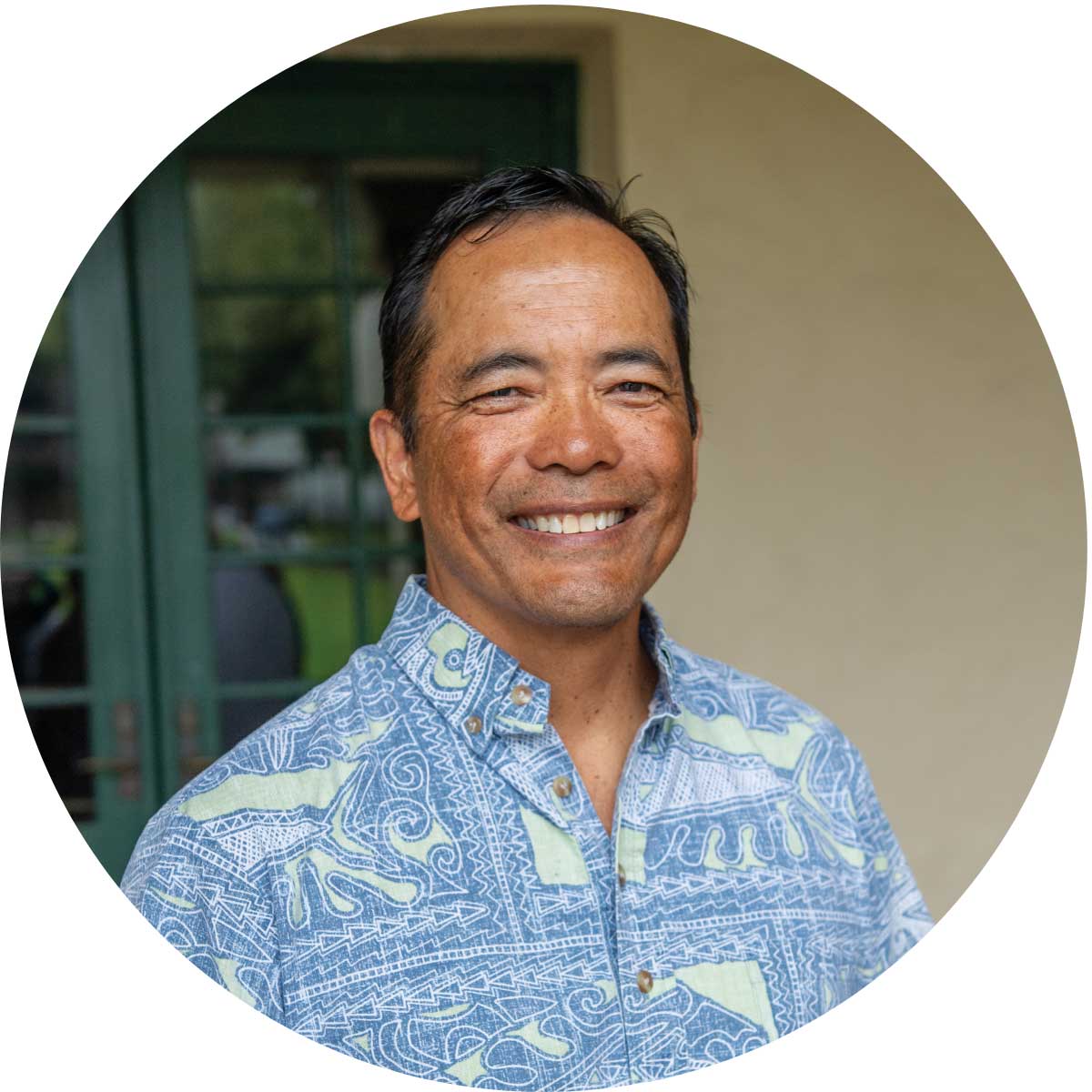
Students aren’t the only beneficiaries of Punahou’s voyaging program. Life sciences teacher Wyeth Collo watched the wa‘a begin to take form beneath his classroom window and felt inspired to volunteer. During the pandemic he spent hours lashing the canoe together – and gaining a deeper understanding of Hawaiian culture and values. “Captain Kaniela always talked about bringing good intentions to the process,” says Collo.
Collo is now one of several faculty members who serve as crew aboard Kamaola. “As a biologist I’ve always had an appreciation for life and its diversity and fragility,” he says. “Being on Kamaola just amplifies that concern of how fragile our earth is, and how integral all the parts are.”
Since launching, the canoe’s crew has learned the nuances of sailing a traditional Hawaiian vessel – including how to surf swells and change directions merely by shifting people’s positions on the boat. “The beauty of Kamaola is that it’s small,” says Lyman-Mersereau. This makes it more responsive than some of the larger wa‘a that he’s sailed on. “Hōkūle‘a doesn’t react as quickly. It’s heavy and big. Perfect for long voyages. But on a small canoe your hands are connected to the paddle going right into the water. With every little adjustment, it’s either taking you off course or on course. This helps to increase your awareness of the environment and an intimacy with the wind and water.” The crew recently added a large, fixed hoe uli (steering blade) to Kamaola’s deck. But Lyman-Mersereau is partial to the original steering system – a simple paddle similar to that used on a six-person canoe. “It’s a much more intimate way of steering than a lot of modern vessels with a tiller and mechanical advantage,” he says. “It keeps us connected to the old ways. You hold this hoe, paddle. It’s connected to you, to the canoe and to the water. You try with as little movement as possible to keep the canoe straight – which is easier said than done.”
Learning to stay on course is just one of the lessons Kamaola offers.
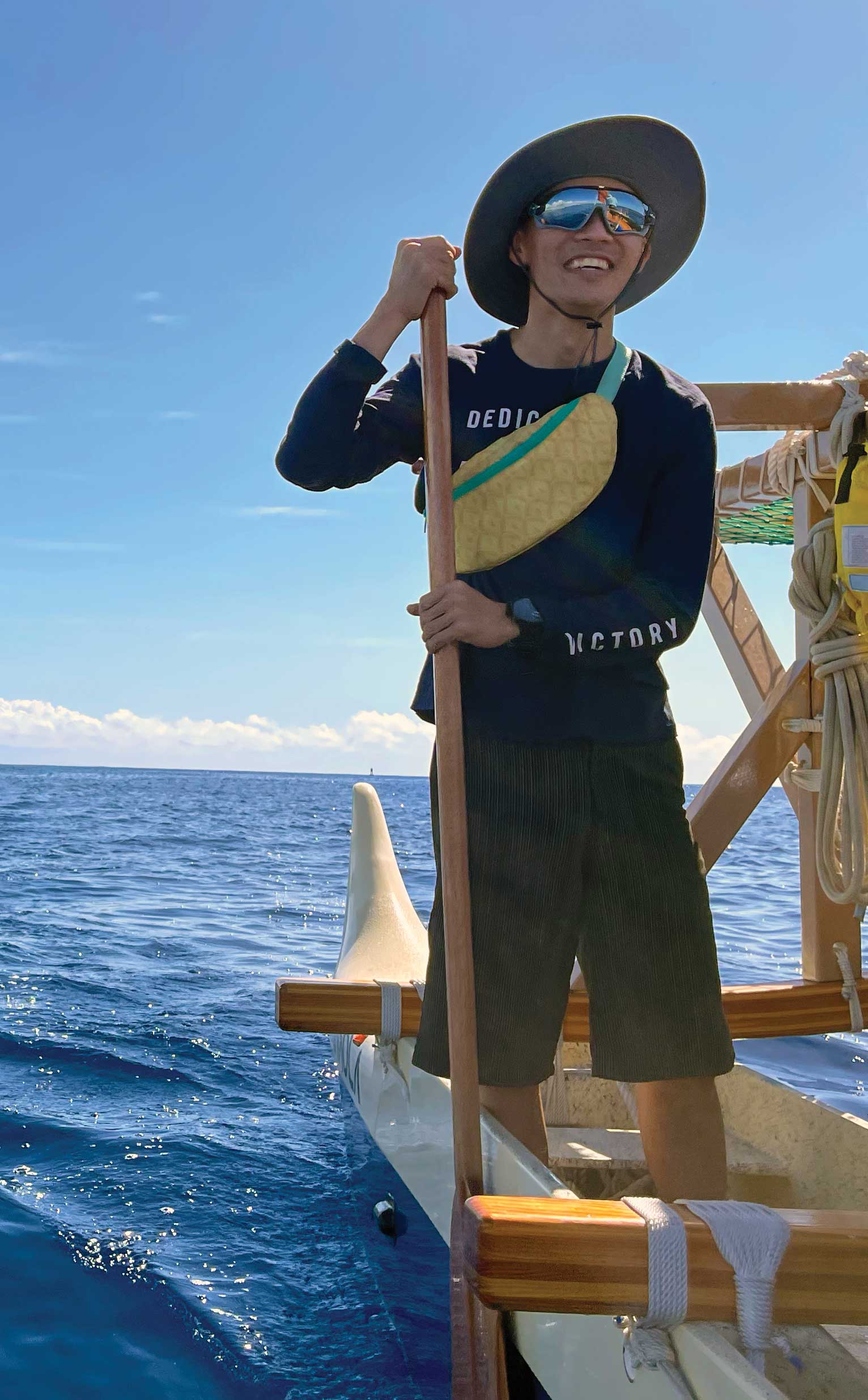
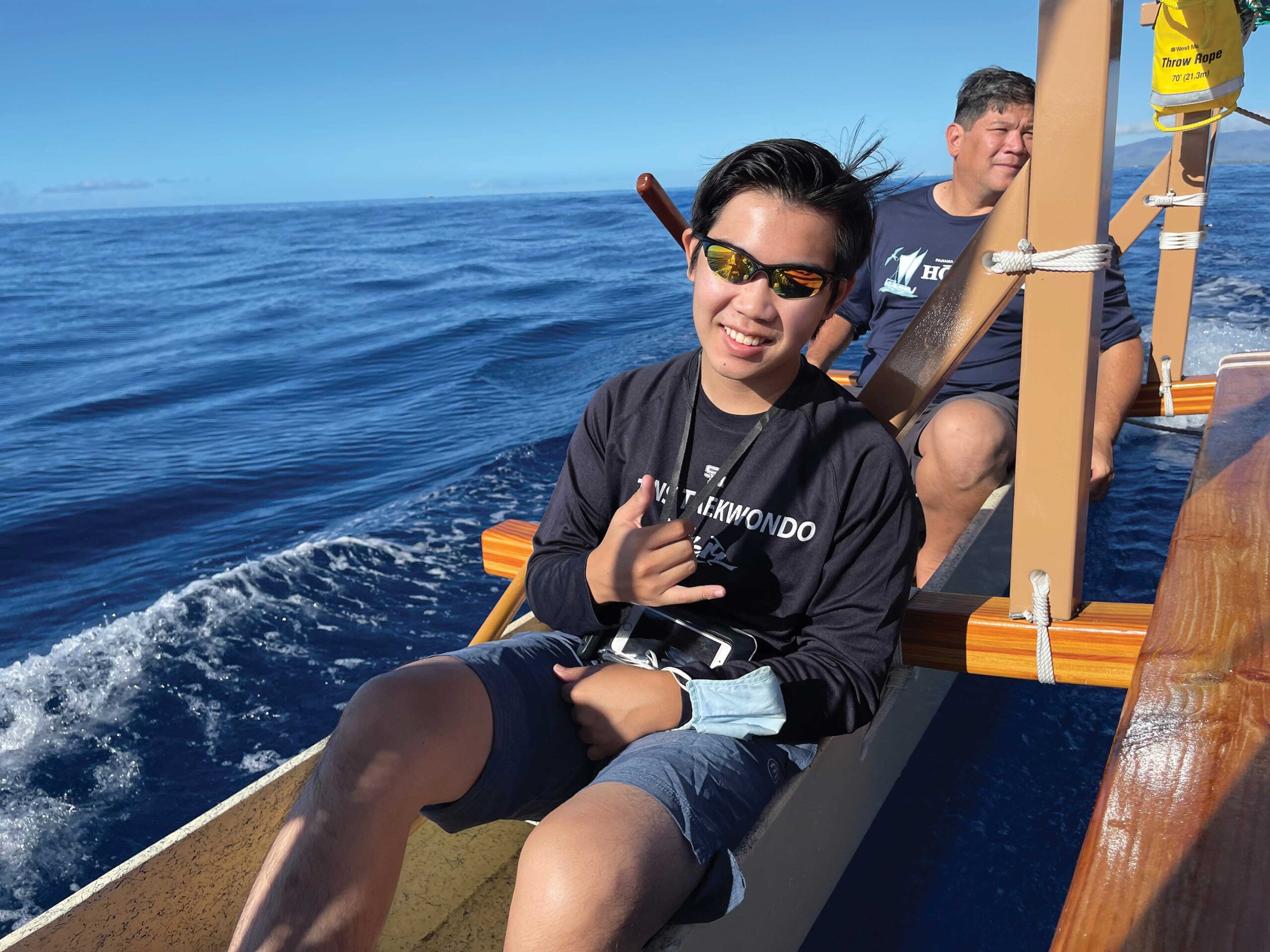
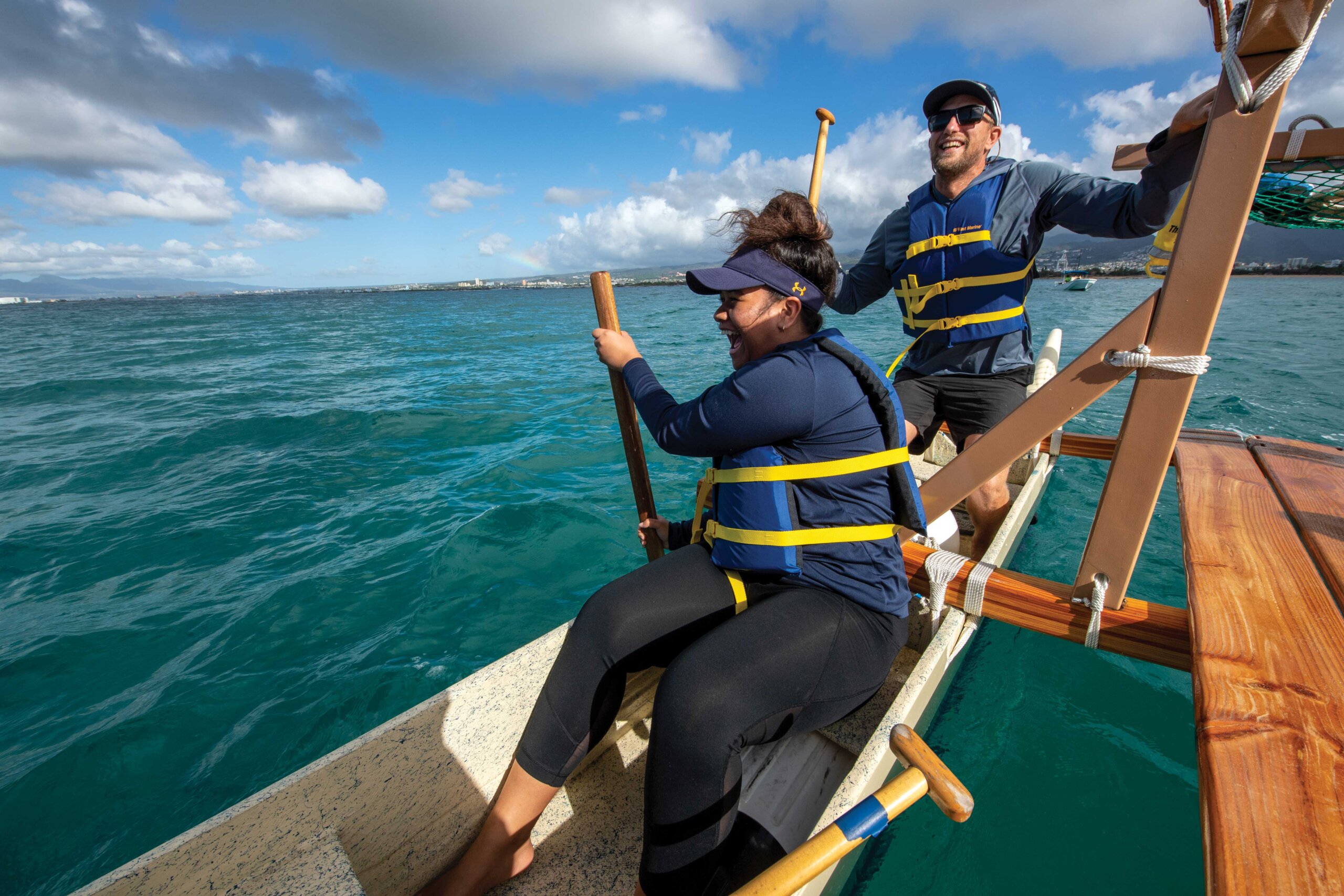
Part of a Vibrant Community
Punahou’s canoe has a special role to play within the greater wa‘a ‘ohana. The canoe found a home at Honolulu Community College’s Marine Education Training Center alongside Hōkūle‘a and the other cherished wa‘a.
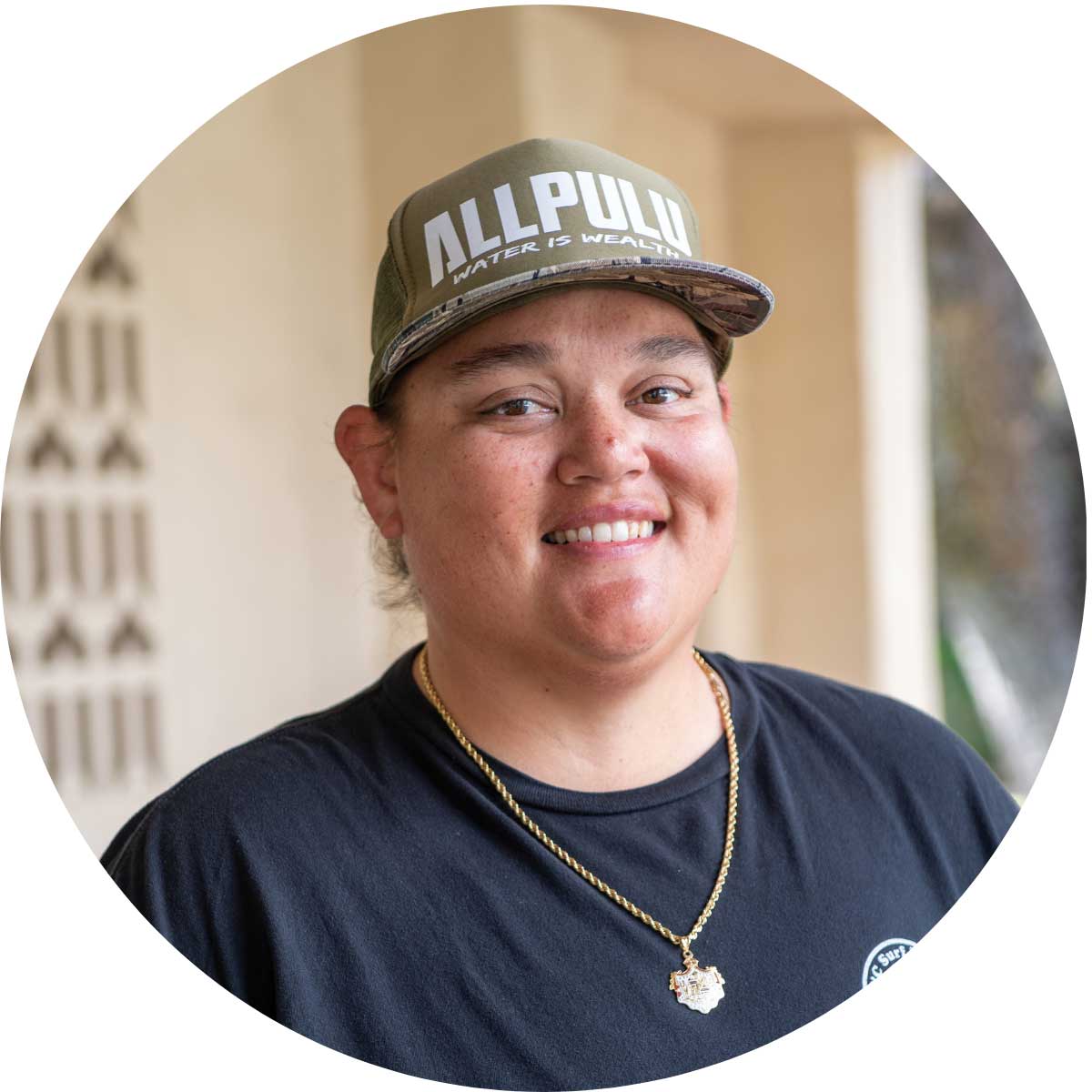
“It’s like the mama to the baby of the fleet,” says Moani Heimuli, a Hōkūle‘a crewmember who built Kamaola’s safety rails and continues to guide the crew. She started voyaging in 2007 as a high school student at Hakipu‘u Learning Center under the tutelage of Ka‘iulani Murphy and Starr Johnson ’98 Tuki. “The canoe essentially became my classroom and taught me pretty much everything I know about life right now,” says Heimuli.
Heimuli helped to crew Kamaola to the 14th Annual City and County Kualoa/Hakipu‘u Canoe Festival this spring in Ko‘olauloa, O‘ahu – the birthplace of Hōkūle‘a and spiritual home of Hawaiian voyaging. “We were privileged and humbled by the invite,” says Lyman-Mersereau. “Hakipu‘u is significant in so many ways and it’s a place we need to steward.”
“I’m really excited to see what Kamaola is going to do for Punahou,” says Heimuli. “Hopefully she will produce more voyagers. I trace my voyaging foundation back to Hōkūle‘a. One day when we get a Punahou student who says, ‘I come from Kamaola’ – that will be a special moment. It’s hope for the generation, and hope for the future of these canoes.”
If you are interested in learning more or offering support please contact voyaging@punahou.edu.


